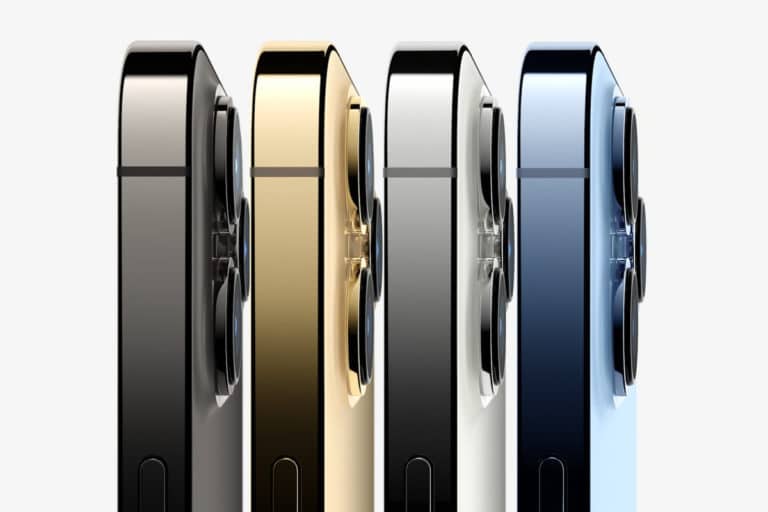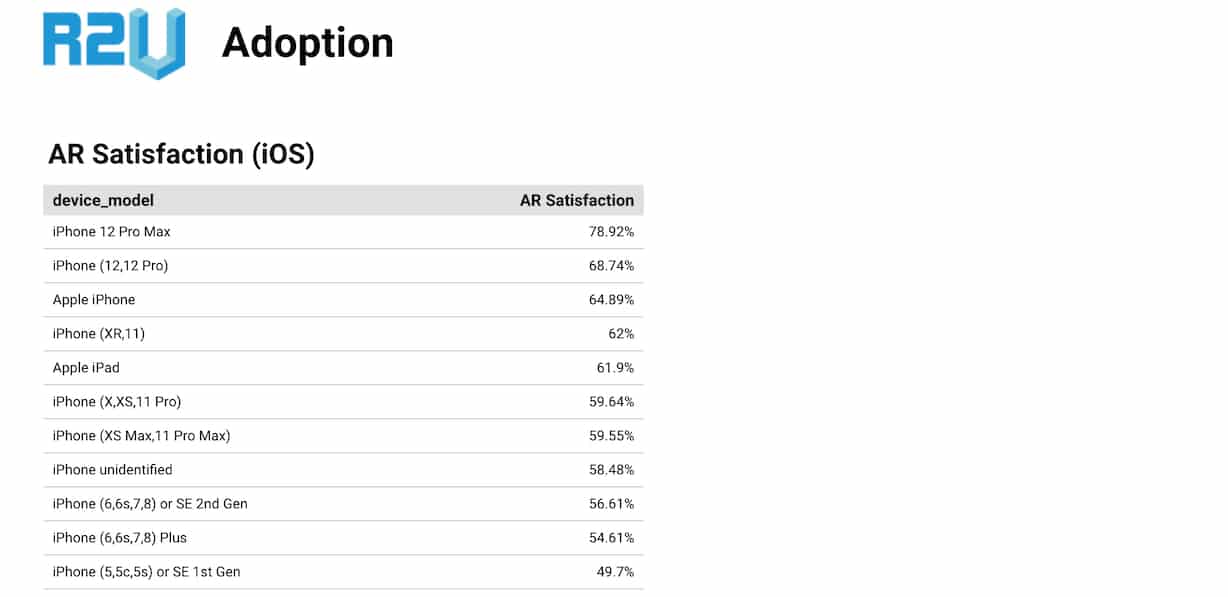
One of the rallying cries of mobile AR proponents is the technology’s scalability. Until AR glasses get sleek enough to be mainstream viable, the here-and-now opportunity is the device that’s already in our pockets. This lets AR piggyback on a ubiquitous vessel.
Wrapping some numbers around that, our research arm ARtillery Intelligence recently quantified 3.1 billion smartphones that can run AR. Most of these involve web AR compatibility, thanks to the efforts of 8th Wall and others that make AR work on commodity hardware.
Further segmenting that total addressable market, there are about 800 million active mobile AR users today. But is this too simplistic or binary? Beyond quantity, what about quality? Do newer devices offer more robust AR experiences (e.g. LiDAR) and user satisfaction?
The easy answer is “yes”, but can we back that up with any hard data from user behavior happening today? To answer that question we went to our friends at R2U – an AR commerce enabler – to see what their usage data shows as the focus of this week’s Data Dive.
Validating Assumptions
Before diving into the data, another key question to contextualize things further is to what degree AR user satisfaction (and adoption as a corollary) hinge on the capabilities of one’s device. And conversely, what degree does satisfaction hinge on the UX that developers create?
The answer of course is “both”, but R2U’s data shows that device quality – including hardware and mobile OS – has a larger than expected impact on user experience and satisfaction. In fact, there’s a clear correlation between device recency and users’ reported AR satisfaction.
Breaking that down, iPhone 12 Pro Max users show a 78.92 percent AR satisfaction rate, followed by iPhone 12 and 12 Pro (68.74 percent), iPhone 11, and XR (62 percent). The full data set can be seen below, which doesn’t include the iPhone 13 line, which is too early for reliable data.
Meanwhile, these high-end satisfaction ratings are partly due to faster processors and better plane detection, which ease AR activation. And higher satisfaction also correlates to bigger and brighter screens that make any multimedia – beyond just AR – pop and sing with greater fidelity.
Either way, these results validate the assumption that better devices equal better AR satisfaction. So if you use an iPhone 12 (or Pro Max 13 for that matter), AR experiences will be better than if you use an older iPhone. This places outsized importance on a given user’s hardware.
“It sounds obvious, but now we have data to back that assumption up,” said R2U CTO Antonio Viggiano. “Newer devices, with improved hardware and software, as well as 5G, are today the biggest driver of what defines good user experience in this field.”

Phasing in
As background on R2U’s survey methodology, it defines AR satisfaction by the number of likes as a function of total feedback. Its SDK asks for this thumbs up or thumbs down whenever users end their first web AR session, and the above zeroes in on iOS responses for consistency.
But the bigger question is what insights can be extracted from these results. As noted, they validate a logical hypothesis most of us already had. But that validation has key implications for AR’s near-term evolution, and how much impact developer rigor and UX have on user satisfaction.
On that measure, these results are a double-edged sword. It’s bad news in that some developer efforts are degraded if even their best work is rendered through consumers’ sub-par hardware. But it’s also good news in that the baseline will only get better as newer hardware phases in.
In other words, we can see the bleeding edge at the high-end of the hardware spectrum, represented by the top marks above. That capability – including 5G and LiDAR – will eventually trickle down to commodity hardware and reach AR-empowering ubiquity….which raises all boats.
“AR technology is improving every year to the point of it inevitably becoming mainstream due to the infrastructure that evolves around it,” said Viggiano. “We expect to see more use cases in the near future as the backbone of the technology gets better.”
https://youtu.be/asrOs719430fhttps://youtu.be/NsV65acVI4ff

